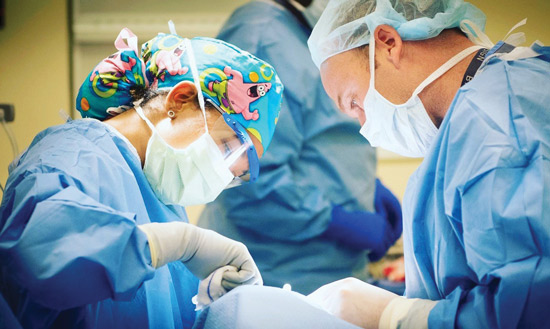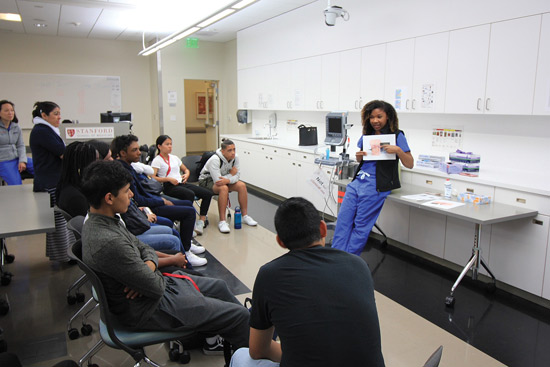It was the end of a busy day in Stanford Hospital’s oncology clinic and I was completely spent from the grind of my responsibilities as a surgical intern. I wanted to find a quiet room, finish my paperwork and head home to crash, but my attending surgeon told me I had one more patient to see. In the exam room, an elderly Black woman with a large sarcoma in her abdomen sat waiting with an anxious look on her face. Her shoulders relaxed and her face lit up the moment she saw me, and we talked openly about having the tumor resected and what the procedure would involve. The woman wanted to know that she would be cared for with compassion and cultural awareness, and my presence provided the reassurance she needed.
When the attending surgeon, an older white man, walked into the room, the woman immediately withdrew. She appeared nervous and uncertain as he quickly described the steps of the procedure as if reading them off a checklist. The woman made eye contact with me when he pushed the consent form in her direction.
I nodded. It’s OK. You’re safe here. I’m convinced the woman wouldn’t have felt comfortable moving forward with the life-saving procedure if we hadn’t connected.
I’ve also seen firsthand how the nation’s health disparities negatively impact patient care. When I was in medical school at Dartmouth, my uncle died from colon cancer and my aunt succumbed to breast cancer. They didn’t go the doctor on a regular basis because of the inherent mistrust Black Americans have for the U.S. healthcare system and were unaware of the need to undergo the cancer screenings that could have saved their lives.
My father battles chronic hypertension and was prescribed ACE inhibitors as a first-line treatment when, in fact, high blood pressure should be managed in African Americans with an initial course of a hydrochlorothiazide followed by treatment with a calcium channel blocker. His hypertension went uncontrolled for years until I discussed his condition with a professor in medical school and realized he was on the wrong medication. It’s now properly managed because I was invested in knowing the different treatment algorithms for Black patients.
Watching members of my family die from treatable diseases and the medical mismanagement of my father fuels my passion to improve the care of minority patients. I’ll also never forget my experience in the clinic with the elderly woman. It’s part of the reason I’m committed to being a visible face in the push for more diversity in surgery and dedicated to role modeling for other Black women surgeons. Now more than ever, I’m passionate about increasing representation in health care and advocating for the equitable care of all patients.
.svg?sfvrsn=be606e78_3)


.svg?sfvrsn=56b2f850_5)